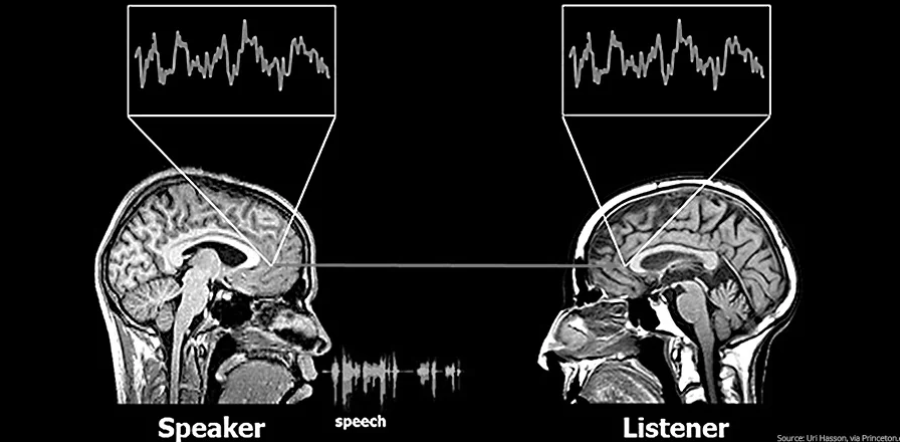Why Storytelling Works: The Science

The human brain has a strong tendency to lose focus. It is estimated to engage in up to 2,000 daydreams a day and to spend up to half its waking time wandering.
It’s no secret that storytelling is a powerful way to communicate information, build relationships, sell products and ideas, and inspire others. But why does it work so well? Recent research into how the brain processes stories gives us some compelling clues:
Stories synchronize the listener’s brain with the teller’s brain.
When the brain sees or hears a story, its neurons fire in the same patterns as the speaker’s brain. This is known as neural coupling. “Mirror neurons” create coherence between a speaker’s brain and the brains of his/her audience members.
Storytelling connects listeners to the storyteller emotionally.
Through a process psychologists call “narrative transport,” good stories engage listeners emotionally. Engaged emotions create empathy with the speaker.
Stories “light up” more of the brain than factual reporting.
When the brain is presented with factual information, only two of its regions activate. FMRI studies show that storytelling causes many additional areas to light up. The brain responds to the story events as if they were actually happening to the listener.
Storytelling enhances memory.
It’s easier to remember facts when they’re told in a story—think Isaac Newton and the apple. Perhaps that’s because the part of the brain involved in memory is the same part involved in imagination and story work.
Stories command human attention.
The human brain has a strong tendency to lose focus. It is estimated to engage in up to 2,000 daydreams a day and to spend up to half its waking time wandering. In the presence of an interesting story, though, this mental meandering goes to zero.
Stories can change the brain’s chemistry.
When captivated by an emotionally engaging story, the brain produces oxytocin, a substance shown to increase generosity, compassion, trustworthiness, and sensitivity to social cues.
Stories affect behavior.
Pioneer “neuroeconomist” Dr. Paul Zak has shown that people are far more likely to donate to a cause after viewing an emotionally impactful story. In a recent social experiment, testers were able to sell $129 worth of trinkets on eBay for over $8000 by crafting personal stories for each object.
Caveat: We aren’t neuroscientists over here…this is where we got our information. Feel free to suggest updates in the comments below.
